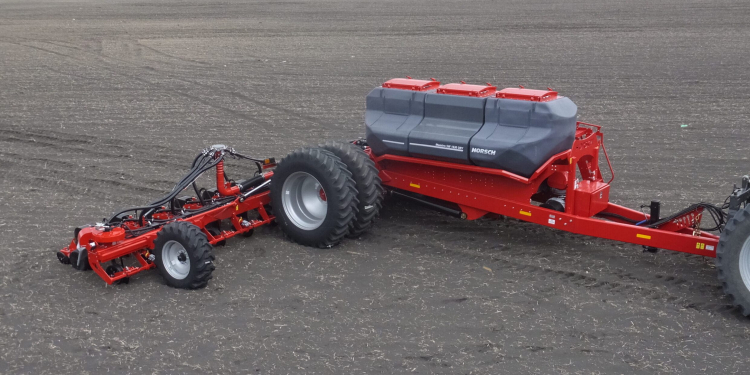In order to increase the efficiency of nitrogen fertilization, stabilized fertilizers can be worthwhile. We say what is possible in dry conditions and in normal years.
The conditions for optimal nitrogen fertilization are very different in Germany. In Lower Saxony, for example, the water can still stand on the fields, while the fields in Saxony-Anhalt are much too dry again.
In addition to soil science knowledge, agro-meteorological factors and operational conditions were decisive for the correct fertilization strategy . The challenges grow. On the one hand, the fertilizer ordinance applies , on the other hand, climate change is causing problems.
Strategy as a modular system with stabilized fertilizers
Increasing nitrogen efficiency is not so easy when the yield is high. Research picks up on important connections step by step in order to further develop existing strategies.
SKW Piesteritz relies on modular systems. They analyze natural and operational factors. Variable fertilization strategies build on this. “Behind our modular systems are all of our experience from numerous experiments, research projects, workshops and practical dialogues,” says Dr. Thomas Kreuter, Head of Agricultural Application Research.
A combination of stabilized and traditional fertilizers can, under certain circumstances, open up considerable potential. A stabilized starting point reduces the risk of loss and offers the plant an optimal nitrogen supply from the start of growth.
With an ammonium- emphasized fertilization there is no threat of overgrowth of the stands. This reduces nitrate or laughing gas losses by 40 to 75 percent. And if the stocks were first optimally led into the late phases of yield generation with stabilized strategies, a traditional late application could definitely also form the end, provided that the fertilizer ordinance still allows it.
Reacting systematically to extreme weather
The following strategies are possible in a fertilization year with normal precipitation distribution:
- 60 to 70 percent of the fertilizer requirement minus Nmin in winter wheat in the first dose as stabilized nitrogen. AlzonNeo-N, for example, is worthwhile.
- 30 to 40 percent of the requirement in BBCH 37 to 39 in a second dose with a traditional nitrogen fertilizer .
Strategy in dry years
In a dry year with very little rain, this division is possible:
- 70 to 80 percent minus Nmin as a stabilized fertilization in the 1st application. In SKW tests, the variants with early fertilization before the start of vegetation were generally superior because there was still enough water available to absorb nutrients before it became dry,
- 0 to 30 percent of the fertilizer requirement as a second dose to BBCH 32 to 37. Traditional fertilizers such as Piamon33-S can be used. If it is extremely dry and precipitation is not foreseeable, this second dose should be omitted
The need for fertilizer advice is increasing significantly
In the past few years the demand for professional advice has increased, says Dr. Maximilian Severin, Head of Marketing for Fertilizers at SKW . Well-founded advice must include user knowledge in the fertilization strategy. The transfer of know-how between official advice, science, agriculture and industry is important.
In 2020 alone, SKW Piesteritz expanded specialist advice by 15 percent. Experiments from 2020 show the synergy of variable fertilization strategies with personal advice: In Barfelde, Lower Saxony, an exact test is being carried out to further optimize modular systems. Compared to traditional fertilization, advantages in yield and nitrogen deprivation are to be expected. This means that modular systems are important for more efficient nitrogen fertilization.








